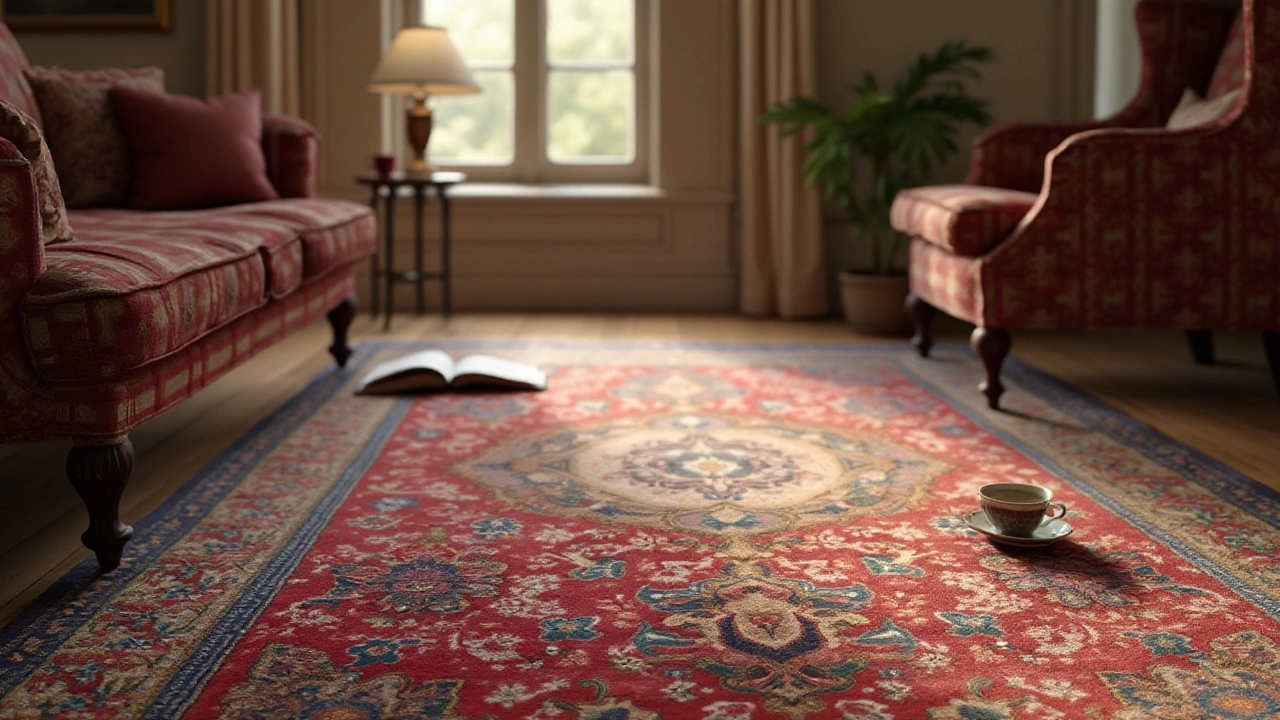Identify Good Rugs – Your Quick Guide to Picking the Right One
Buying a rug can feel overwhelming. Do you go for a plush pile, a flat weave, or a natural fiber? The good news is you don’t need to be an interior designer to know what works. In this guide we break down the basics, show you what to look for, and give you practical steps to pick a rug that looks great and lasts long.
What Makes a Rug Good?
A good rug has three core qualities: material, construction, and finish. Material tells you how the rug feels and how it handles wear. Wool is soft, resilient and naturally stains‑resistant. Cotton feels light but can flatten quickly in high‑traffic areas. Synthetic fibers like nylon or polypropylene are budget‑friendly and easy to clean, but they may feel plasticky underfoot.
Construction is the way the rug is put together. Hand‑knotted rugs have each knot tied individually – they’re usually the most durable and develop a lovely patina over years. Flat‑weave rugs are woven on a loom and stay thin, making them perfect for a minimalist look or for sliding doors. Tufted rugs are made by punching yarn through a backing; they’re affordable and soft but can shed if the backing isn’t strong.
Finish covers the backing, edges, and any protective coating. A sturdy latex or rubber backing keeps the rug in place and prevents slipping. Look for reinforced edges – double‑stitched or bound edges reduce fraying. If the rug has a stain‑resistant spray, that’s a bonus for families with kids or pets.
Tips to Spot Quality Rugs
1. Feel the pile. Run your hand over the surface. A good pile should feel even, without soft spots or lumps. Press down – a high‑quality rug springs back quickly.
2. Check the weight. Heavier rugs usually mean denser weave or thicker yarn, which translates to durability. Light rugs can be fine for decorative purposes but may wear out fast under furniture.
3. Look for consistent pattern. Examine the design at the edges and across the middle. Irregularities can signal cheap manufacturing or uneven weaving.
4. Test for colorfastness. If possible, rub a damp cloth on a hidden spot. The color should stay put. This matters especially for bright or dark rugs that can bleed onto floors.
5. Read the label. Reputable brands list fiber type, knot count (for hand‑knotted), and care instructions. A clear label is a sign the seller stands behind the product.
When you’re shopping online, use close‑up photos to spot texture and weave. Compare the product description with real‑world reviews – buyers often talk about wear after months of use.
Finally, match the rug to your space. Measure the room and decide how much floor you want covered. A common rule is to leave at least 18‑24 inches of bare floor around the rug for a balanced look. For dining tables, the rug should extend 24 inches beyond the table edge.
By focusing on material, construction, and finish, and using these quick checks, you’ll be able to spot a good rug in minutes. No need to spend hours reading glossy ads – just trust your senses and the basics we covered.
Ready to shop? Grab a few samples, feel the pile, and pick the one that feels right under your feet. Your floor will thank you.
When diving into the world of rugs, knowing how to distinguish a piece of quality craftsmanship can significantly affect your home's interior. Understanding factors like material, weave, and overall durability is essential. This article provides key insights into recognizing a rug's quality, including tips on material longevity, knot count significance, and design precision. By becoming informed, you ensure that your investment not only adds beauty but also stands the test of time.
Dec, 9 2024
